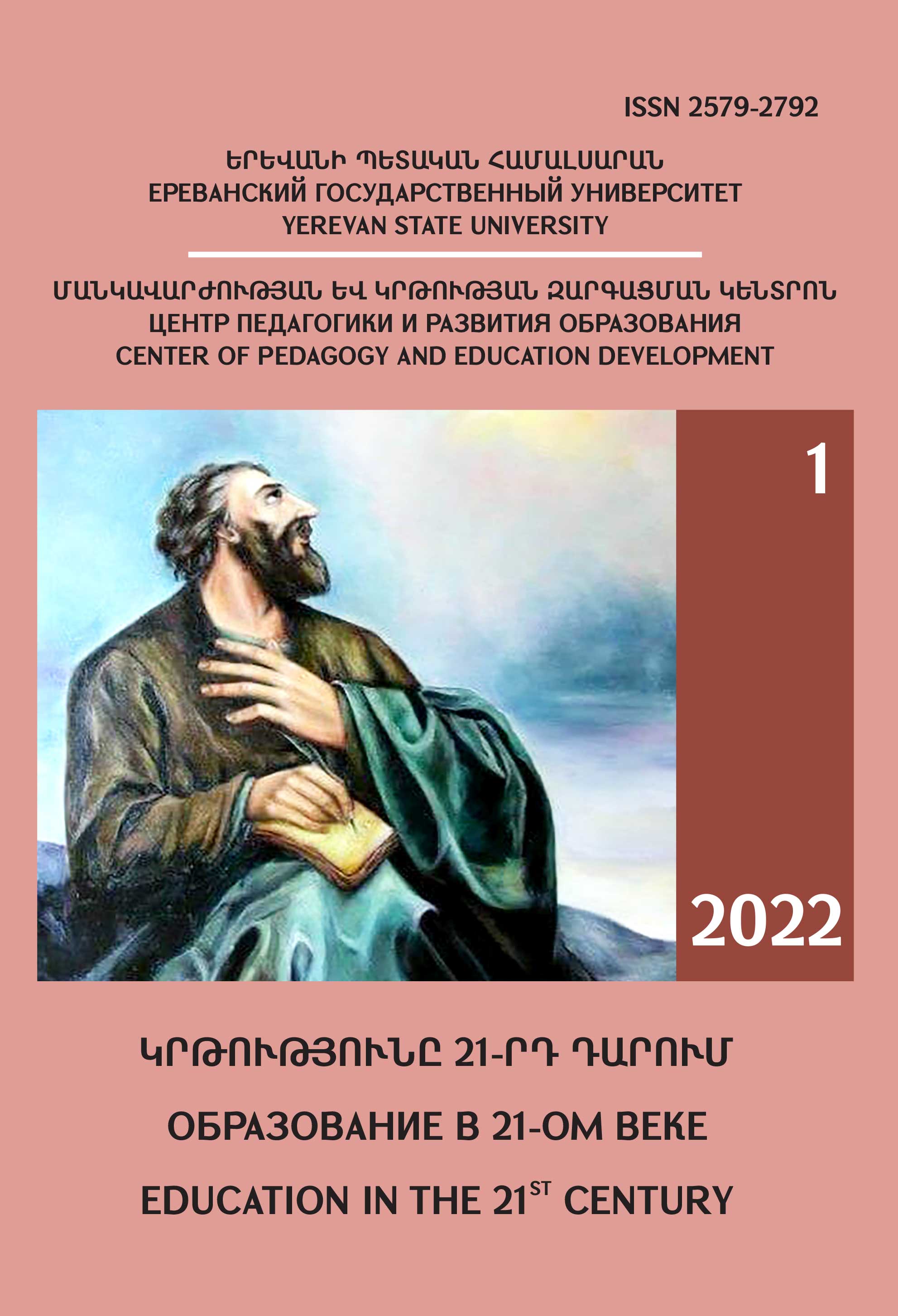ԿՐԹԱԿԱՆ ԲԱՐԵՓՈԽՈՒՄՆԵՐ VS. ԿՐԹԱԿԱՆ ՆՄԱՆԱԿՈՒՄՆԵՐ: ՀԱՅԱՍՏԱՆԻ ԲԱՐՁՐԱԳՈՒՅՆ ԿՐԹՈՒԹՅԱՆ ՀԱՄԱԿԱՐԳՈՒՄ «ՊԼԱՍԵԲՈ» ԴԱՌՆԱԼՈՒ ՀԱՆԳԱՄԱՆՔՆԵՐԸ
DOI:
https://doi.org/10.46991/educ-21st-century.v7i1.8174Keywords:
բարձրագույն կրթության բարեփոխումներ, բարձրագույն կրթության քաղաքականություն, բարձրագույն կրթության հայեցակարգային հիմունքներ, արդյունավետության չափման համակարգAbstract
Այս հոդվածի նպատակն է ներկայացնել Հայաստանում բարձրագույն կրթության այնպիսի համակարգի անհրաժեշտությունը, որը հիմնված է կրթության սուբյեկտների (օրինակ՝ պետություն, հասարակություն, ուսանողներ, պրոֆեսորադասախոսական կազմ, հոգաբարձուների խորհուրդ, ծնողներ) կարիքների վրա։ Այս հոդվածում ներկայացված է հայեցակարգային շրջանակ այն հիմնահարցերի շուրջ, թե արդյոք վերջին երկու տասնամյակների ընթացքում Հայաստանում իրականացված բարձրագույն կրթության բարեփոխումներն ուղղված են եղել միջազգայնորեն մրցունակ բարձրագույն կրթության համակարգի ստեղծմանը և գործառմանը, թե դրանք եղել են պարզապես համաշխարհային տարբեր զարգացումների նմանակումեր կամ կրթական տարբեր տարածքներում ընթացող փոփոխությունների հետևանքներ: Հայեցակարգային շրջանակը մշակվել է փաստաթղթերի համապարփակ վերլուծության, մասնագիտական գրականության ուսումնասիրության և Հայաստանի Հանրապետությունում բարձրագույն կրթության բարեփոխումների իրականացման վերաբերյալ անցկացված խորքային հարցազրույցների արդյունքների հիման վրա: Մի շարք խորքային հարցազրույցներ են անցկացվել կրթության քաղաքականություն մշակողների լայն շրջանակի, բուհերի ղեկավարների, ինստիտուցիոնալ հավատարմագրում իրականացնողների, որակի ապահովման ներկայացուցիչների և տարբեր շահագրգիռ կողմերի հետ:
1991 թ. անկախության ձեռքբերումից մինչև 2005 թ. Բոլոնիայի գործընթացին անդամակցումը Հայաստանը գաղափարապես հեռու էր կրթության համաշխարհային բարեփոխումներից և հանձն առավ կրթական բարեփոխումների իրականացումը: Սա գաղափարապես համեմատելի է այն պնդման հետ, որ կրթական բարեփոխումները «պլասեբո» են, այսինքն՝ խորհրդանշական գործողություններ, որոնք ուղղված են ցույց տալու կառավարության իրազեկվածությունը խնդիրների և մտադրությունների, այլ ոչ թե լուրջ քայլերի և քաղաքականության վերաբերյալ՝ սոցիալական համախմբվածության հասնելու և միջազգայնորեն մրցունակ բարձրագույն կրթության համակարգ ունենալու համար:
References
References:
Cantwell, B., Marginson, S., and Smolentseva, A. (Eds.) 2018. Higher Participation Systems in
Higher Education. Oxford University Press.
Karakhanyan, S. and Stensaker, B. (Eds) 2020. Global Trends in Higher Education Quality
Assurance: Challenges and Opportunities in Internal and External Quality Assurance. Brill Sense. Leiden,
Boston.
Shapiro, J. & Hughes, S. 1996. Information Literacy as a Liberal Art: Enlightenment Proposals
for a New Curriculum. Educom Review, 31.
Downloads
Published
How to Cite
Issue
Section
License
Copyright (c) 2022 Education in the 21st Century

This work is licensed under a Creative Commons Attribution-NonCommercial 4.0 International License.

